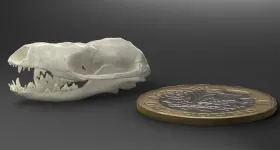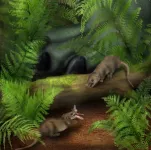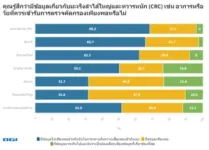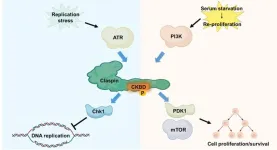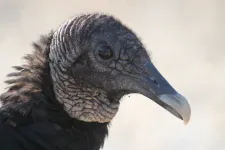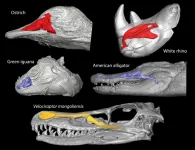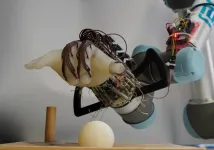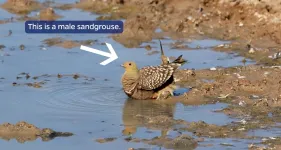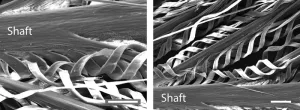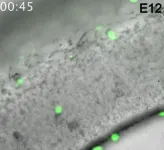(Press-News.org) The ancestors of modern mammals managed to evolve into one of the most successful animal lineages – the key was to start out small and simple, a new study reveals.
In many vertebrate groups, such as fishes and reptiles, the skull and lower jaw of animals with a backbone are composed of numerous bones. This was also the case in the earliest ancestors of modern mammals over 300 million years ago.
However, during evolution the number of skull bones was successively reduced in early mammals around 150 to 100 million years ago.
Publishing their findings today in Communications Biology, an international team of palaeontologists show how they used computer simulations and stress analyses to investigate the purpose of this skull simplification.
Their research demonstrates that reducing the number of skull bones did not lead to higher bite forces or increased skull strength as hypothesized for many decades. Instead, the team found that the skull shape of these early mammals redirected stresses during feeding in a more efficient way.
Lead-author Dr Stephan Lautenschlager, Senior Lecturer for Palaeobiology at the University of Birmingham commented: “Reducing the number of bones led to a redistribution of stresses in the skull of early mammals. Stress was redirected from the part of the skull housing the brain to the margins of the skull during feeding, which may have allowed for an increase in brain size.
“Changes to skull structure combined with mammals becoming smaller are linked with a dietary switch to consuming insects - allowing the subsequent diversification of mammals which led to development of the wide-range of creatures that we see around us today.”
The study further demonstrated that alongside the reduction of skull bones, early mammals also became a lot smaller, some of which had a skull length of only 10-12 mm. This miniaturization considerably restricted the available food sources and early mammals had adapted to feeding mostly on insects.
This combination of small size, reduced number of skull bones and feeding on new food sources, such as insects, allowed the ancestors of modern mammals to thrive in the shadows of the dinosaurs.
However, it was not until dinosaurs became extinct at the end of the Cretaceous, some 66 million years ago, that mammals had a chance to further diversify and reach the large range of body sizes seen today.
ENDS
For more information, please contact Tony Moran, International Communications Manager, University of Birmingham on +44 (0)782 783 2312 or t.moran@bham.ac.uk. Out-of-hours please call +44 (0)121 414 2772. You can also contact Dr Lautenschager directly -s.lautenschlager@bham.ac.uk or +44 (0) 121 414 3957
IMAGE CAPTIONS – please credit Dr Stephan Lautenschlager, University of Birmingham
Image 1: Digital skull model of the small-sized Jurassic mammal ancestor Hadrocodium wui.
Image 2: Artistic reconstruction of early mammal ancestors (species: Hadrocodium wui) shown hunting insect prey, illustrating how the adoption of an insectivorous diet and miniaturization played an important role in mammal.
Notes to Editors
The University of Birmingham is ranked amongst the world’s top 100 institutions, its work brings people from across the world to Birmingham, including researchers and teachers and more than 8,000 international students from over 150 countries.
‘Functional reorganisation of the cranial skeleton during the cynodont–mammaliaform transition’ - Stephan Lautenschlager, Michael J. Fagan, Zhe-Xi Luo, Charlotte M. Bird, Pamela Gill and Emily J. Rayfield is published in Communications Biology.
Participating institutions include the Universities of Birmingham, Hull and Bristol, in the UK; the University of Chicago, USA; and The Natural History Museum, London. END
Starting small and simple - key to success for evolution of mammals
2023-04-12
ELSE PRESS RELEASES FROM THIS DATE:
New “AI scientist” combines theory and data to discover scientific equations
2023-04-12
In 1918, the American chemist Irving Langmuir published a paper examining the behavior of gas molecules sticking to a solid surface. Guided by the results of careful experiments, as well as his theory that solids offer discrete sites for the gas molecules to fill, he worked out a series of equations that describe how much gas will stick, given the pressure.
Now, about a hundred years later, an “AI scientist” developed by researchers at IBM Research, Samsung AI, and the University of Maryland, Baltimore County (UMBC) has reproduced a key part of Langmuir’s Nobel Prize-winning work. The system—artificial intelligence ...
When cells sense the cue for growth
2023-04-12
Researchers of the Genome Dynamics Project team at Tokyo Metropolitan Institute of Medical Science ·revealed new mechanism controlling cellular proliferation in response to serum, which triggers growth of resting cells.
One of the key pathways for cellular growth is the phosphoinositide 3-kinase (PI3K) –mTOR (mechanistic/mammalian target of rapamycin) pathway. mTOR regulates the cellular response to nutrient availability. Dysregulation of the mTOR signaling pathway is intimately involved in many human diseases, especially the multitude of different human cancers. This ...
Most plastic eaten by city vultures comes straight from food outlets
2023-04-12
Since the 1950s, humanity has produced an estimated 8.3bn tons of plastic, adding a further 380m tons to this amount each year. Only 9% of this gets recycled. The inevitable result is that plastic is everywhere, from the depths of the oceans to the summit of Everest – and notoriously, inside the tissues of humans and other organisms.
The long-term effects of ingested plastic on people aren’t yet known. But in rodents, ingested microplastics can impair the function of the liver, intestines, and exocrine and reproductive organs.
Especially ...
To more effectively sequester biomass and carbon, just add salt
2023-04-12
Reducing global greenhouse gas emissions is critical to avoiding a climate disaster, but current carbon removal methods are proving to be inadequate and costly. Now researchers from the University of California, Berkeley, have proposed a scalable solution that uses simple, inexpensive technologies to remove carbon from our atmosphere and safely store it for thousands of years.
As reported today in the journal Proceedings of the National Academy of Sciences, researchers propose growing biomass crops to capture carbon from the air, then burying the harvested vegetation in engineered dry biolandfills. This ...
How to cool your brain? These warm-blooded animals use their nose
2023-04-12
A research team led by Seishiro Tada and Takanobu Tsuihiji of the University of Tokyo shows that the living warm-blooded descendants of theropod dinosaurs evolved a better nasal cooling system aided by larger nasal cavities than cold-blooded animals. The study provides clues to the evolution of nasal cooling in warm-blooded animals from their theropod dinosaur ancestors.
Endotherms, or warm-blooded animals, maintain their high body temperature through internal heat sources. Birds, humans, and other mammals are endotherms. But ectotherms, or cold-blooded animals such as reptiles, use external heat sources to keep ...
It’s all in the wrist: energy-efficient robot hand learns how not to drop the ball
2023-04-12
Researchers have designed a low-cost, energy-efficient robotic hand that can grasp a range of objects – and not drop them – using just the movement of its wrist and the feeling in its ‘skin’.
Grasping objects of different sizes, shapes and textures is a problem that is easy for a human, but challenging for a robot. Researchers from the University of Cambridge designed a soft, 3D printed robotic hand that cannot independently move its fingers but can still carry out a range of complex movements.
The robot hand was trained to ...
How an African bird might inspire a better water bottle
2023-04-12
An extreme closeup of feathers from a bird with an uncanny ability to hold water while it flies could inspire the next generation of absorbent materials.
With high resolution microscopes and 3D technology, researchers at Johns Hopkins University and Massachusetts Institute of Technology captured an unprecedented view of feathers from the desert-dwelling sandgrouse, showcasing the singular architecture of their feathers and revealing for the first time how they can hold so much water.
“It’s super fascinating to see how nature managed to create structures so perfectly efficient to take ...
Time-restricted fasting could cause fertility problems
2023-04-12
Time-restricted fasting diets could cause fertility problems according to new research from the University of East Anglia.
A new study published today shows that time-restricted fasting affects reproduction differently in male and female zebrafish.
Importantly, some of the negative effects on eggs and sperm quality can be seen after the fish returned to their normal levels of food consumption.
The research team say that while the study was conducted in fish, their findings highlight the importance of considering not just the effect of fasting on weight and health, but also on fertility.
Prof Alexei Maklakov, from UEA’s School of Biological Sciences, said: “Time-restricted ...
Scientists uncover the amazing way sandgrouse hold water in their feathers
2023-04-12
Many birds’ feathers are remarkably efficient at shedding water — so much so that “like water off a duck’s back” is a common expression. Much more unusual are the belly feathers of the sandgrouse, especially Namaqua sandgrouse, which absorb and retain water so efficiently the male birds can fly more than 20 kilometers from a distant watering hole back to the nest and still retain enough water in their feathers for the chicks to drink and sustain themselves in the searing deserts ...
Alternative route used by specialized immune cells to colonize the embryonic brain suggests new approach to fighting fetal brain dysfunction
2023-04-12
A team from the Nagoya University Graduate School of Medicine in Japan has uncovered new information about how microglia, the resident immune cells in the brain, colonize the brain during the embryonic stage of development. Although erythromyeloid progenitors (EMPs) were previously thought to divide into either microglia or macrophages, the group found that macrophages that enter the brain primordium —the brain in its earliest recognizable stage of development— can become microglia at later stages of development. These findings demonstrate the plasticity of these ...
